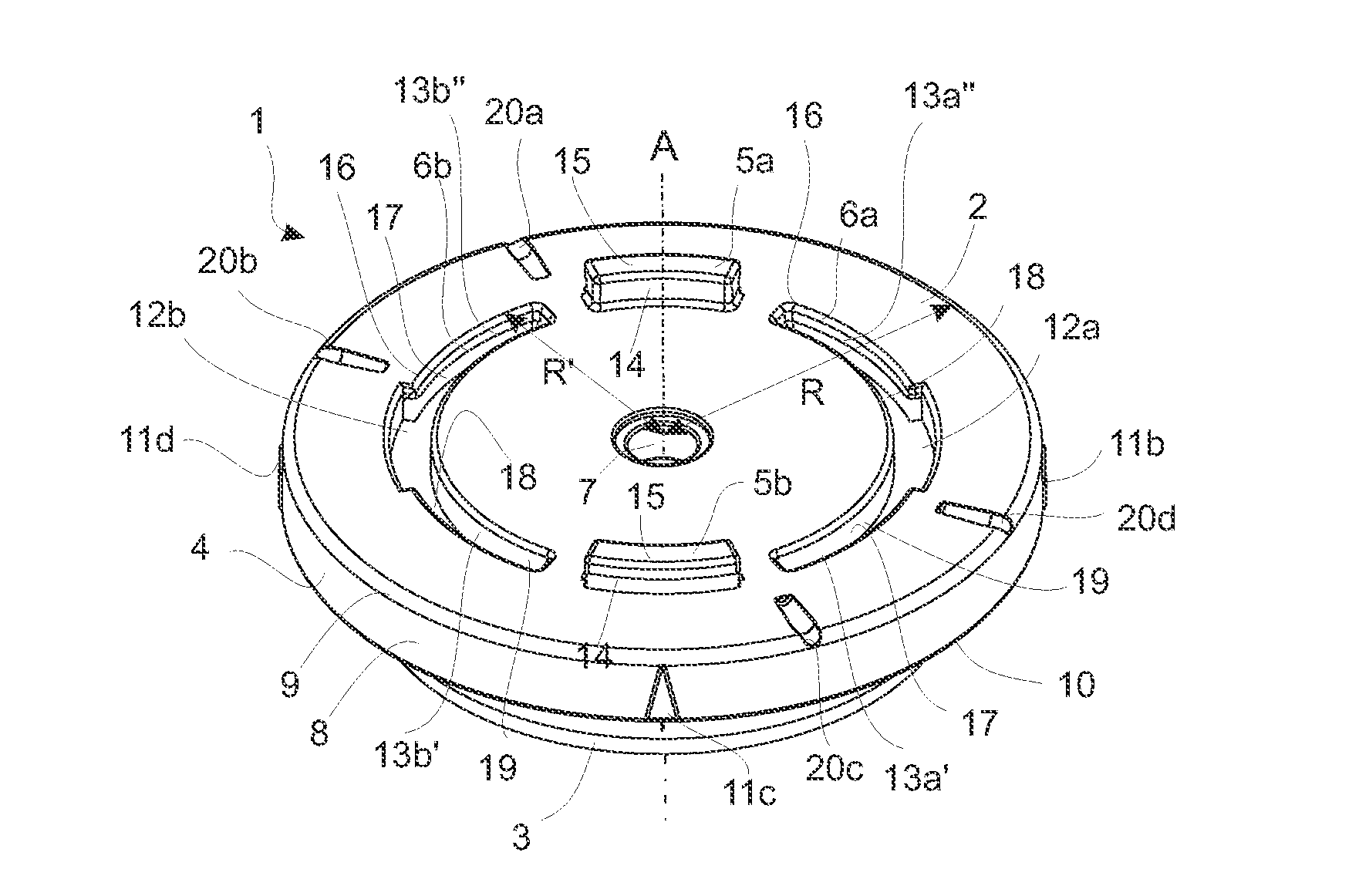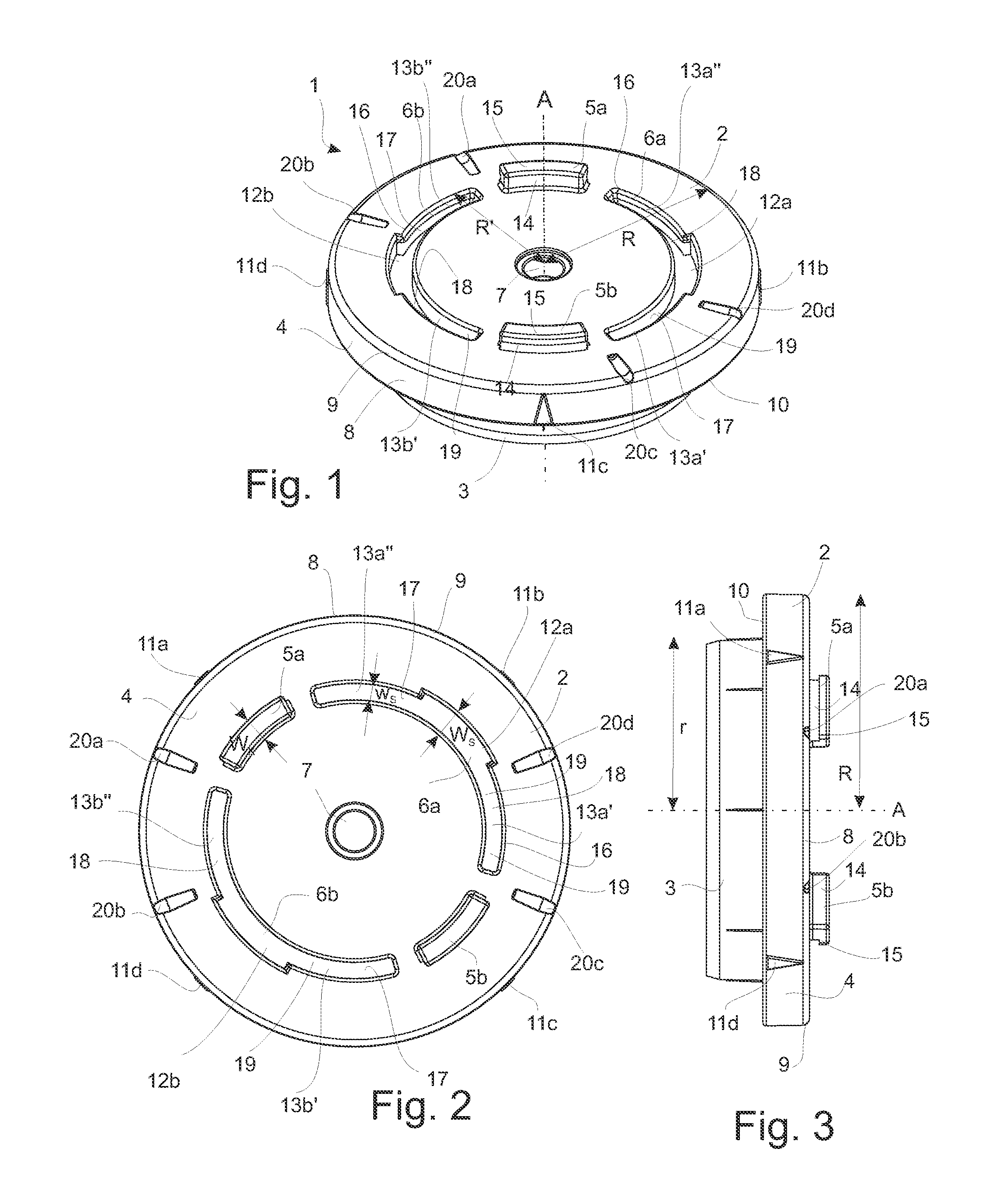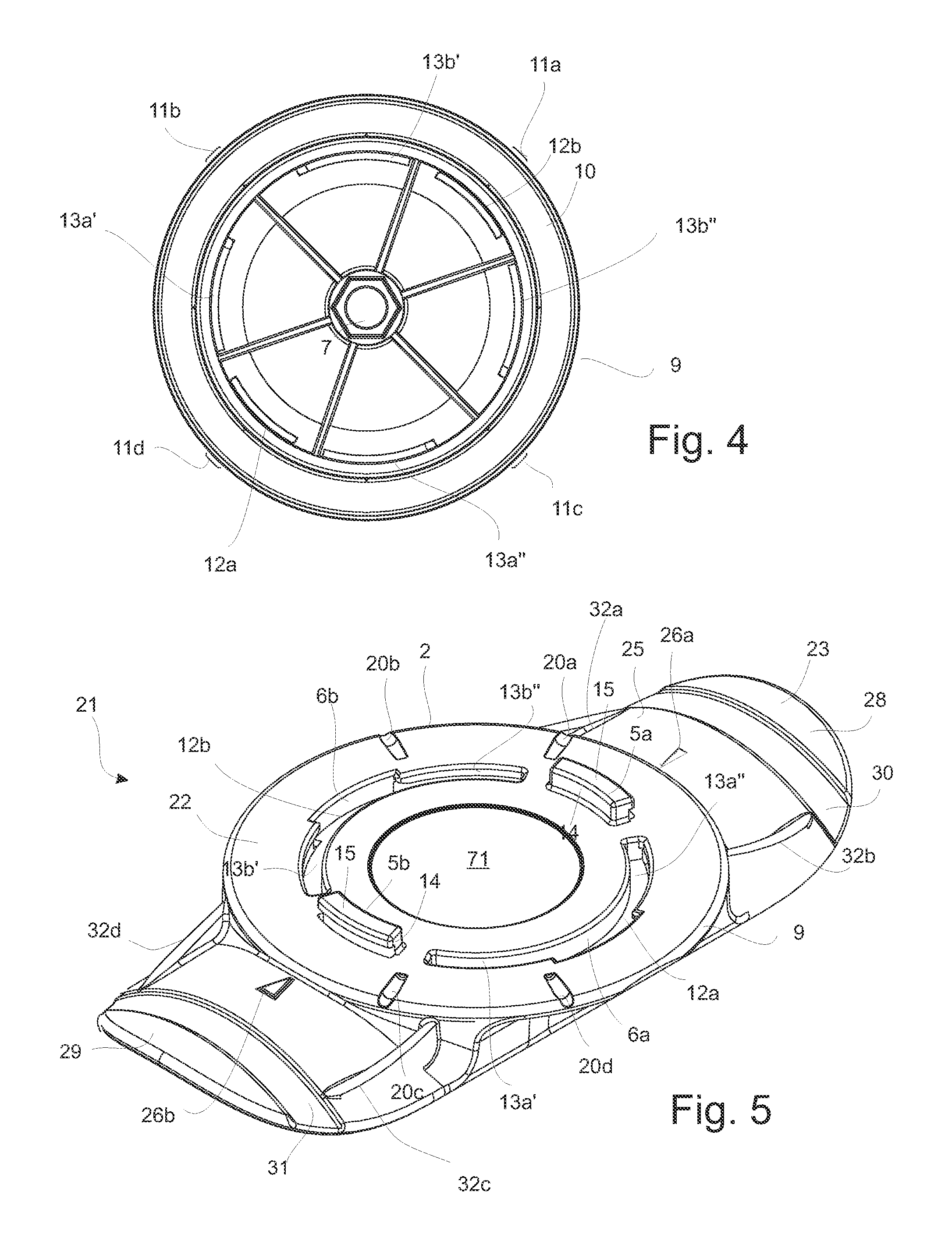Modular climbing tree and method of assembly
a technology of modular climbing trees and climbing branches, applied in the field of modular climbing trees, can solve the problems of inability to reuse, complex assembling of known modular climbing trees, and inability to disassemble without destroying building elements, etc., and achieve the effect of easy and fast assembling and/or disassembling, and balanced structur
- Summary
- Abstract
- Description
- Claims
- Application Information
AI Technical Summary
Benefits of technology
Problems solved by technology
Method used
Image
Examples
second embodiment
[0054]Branches can be made by using a connecting component according to the present invention. The first connecting part may be a shell element, preferably an oblong shell element, defining a furrow with an interior radius of curvature corresponding substantially to the exterior radius of a pole to be accommodated in the cavity defined by the furrow of the shell element. When the shell element is mounted on the pole the longitudinal axis of the shell element is arranged substantially parallel to the pole's centre axis so that the wall of the pole rests on the interior surface of the shell element. Accordingly, the shell element's interior surface curves inwards to define a contact face and cavity for the pole. The shell element thus surrounds at least some of the poles circumference, e.g. third or half the circumference. In case the shell element is oblong the abutment area between pole and shell element is large and confer a high degree of structural stability to the assembly of po...
third embodiment
[0062]The above connecting components render it possible to build stable, sturdy and spaced lattices structures for any imaginable use. In case of a cat climbing tree cats can climb up and come down without slipping or falling. Accessories and items, such at tunnels, cat houses, shelves or trays can be mounted by e.g. fasting the annular socket of the third embodiment to the item, and suddenly such an item can easily be snapped together with another connecting component. In case the items shall be repositioned it is simply disconnected and moved to a new position.
[0063]The invention according to the appended claims is illustrated below by way of an exemplary selection of connecting components sharing the common feature of having both male coupling elements and female coupling elements. Although the connecting components are shown with two male coupling elements and two female coupling elements other feasible numbers of coupling elements are included within the scope of the present i...
first embodiment
[0065]a connecting component 1 has a first connecting part 3 configured for fastening to a pole (not shown) or a surface (not shown) and an opposite second connecting part 4 including the flat top surface 2, and two male coupling elements 5a,5b opposite each other, in alternating arrangement with two female coupling elements 6a,6b along a circle on the flat top surface 2. The male coupling elements 5a,5b are dimensioned for engaging and locking with the mating female coupling elements 6a,6b of another connecting component selected from the selection of connecting components according to the present invention.
[0066]The first connecting part 3 and the second connecting part 4 are mainly shaped as cylindrical disks, which are sized so that the second connecting part 4 has a larger radius R than the radius r of the first connecting part 3 to allow the first connecting part 3 to be plugged into an end opening of a pole (not shown), and the second connecting part 4 to span an exterior dia...
PUM
| Property | Measurement | Unit |
|---|---|---|
| angle | aaaaa | aaaaa |
| curvature | aaaaa | aaaaa |
| width | aaaaa | aaaaa |
Abstract
Description
Claims
Application Information
 Login to View More
Login to View More - R&D
- Intellectual Property
- Life Sciences
- Materials
- Tech Scout
- Unparalleled Data Quality
- Higher Quality Content
- 60% Fewer Hallucinations
Browse by: Latest US Patents, China's latest patents, Technical Efficacy Thesaurus, Application Domain, Technology Topic, Popular Technical Reports.
© 2025 PatSnap. All rights reserved.Legal|Privacy policy|Modern Slavery Act Transparency Statement|Sitemap|About US| Contact US: help@patsnap.com



